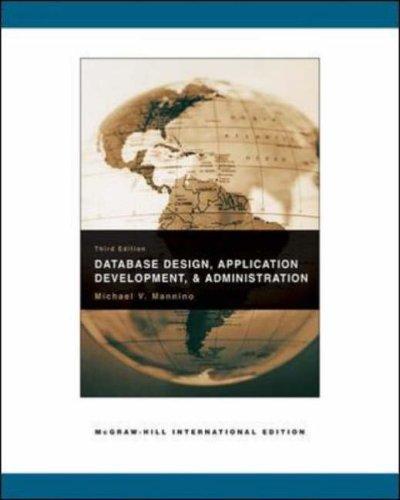Answered step by step
Verified Expert Solution
Question
1 Approved Answer
10 Upvotes are waiting.... Thankyou Question: In this project we will build a simulation model for an airport. Our airport works 24 hours per day


10 Upvotes are waiting.... Thankyou
Question: In this project we will build a simulation model for an airport. Our airport works 24 hours per day and we will run our model for 10 days. Passengers arrive at the main entrance door of the airport with an exponential distribution with mean 2.1 minutes, with the first arrival at time 0. After coming to entrance door, passengers go to the entrance security first, and travel time from entrance to security is distributed uniformly between 1.2 and 2.3 minutes. There are 3 entrance security, fed by a single FIFO queue. Also, passengers pass through security with triangular distribution with parameters 3.4, 4.8, 5.2. Of these passengers, 35% go left to an old-fashioned manual check-in desk, 50% go right to a newfangled automated check-in desk, and the remaining 15% don't need to check in at all and proceed directly to the final security. Travel time between entrance security and manual check-in desk is distributed uniformly between 1.2 and 2.4 minutes. Travel time between entrance security and newfangled automated check-in desk is distributed uniformly between 1.5 and 2.3 minutes. Travel time between entrance security and the final security is distributed uniformly between 2.9 and 3.3 minutes. In the first 12 hours, there are 3 agents at the manual check-in station and in the second 12 hours there are 2 agents at the manual check-in station, fed by a single FIFO queue; manual check- in times follow a triangular distribution with parameters minimum 2.3, mode 5.5 and maximum 8.4 minutes. After manual check-in station, passengers walk to the final security area, travel time between manual check-in station and the final security area takes between 2.0 and 5.8 minutes, uniformly distributed. The automated check-in has two kiosk machines, fed by a single FIFO queue, and check-in times are triangularly distributed with minimum 2.1, mode 3.6 and maximum 5.2 minutes. These kiosk machine can be broken down some time. Kiosk machines are up for exponential distribution with mean 30 minutes and their repairing time is exponential distribution with mean 10 minutes (if kiosk machine is busy, it finishes its job and then it is broken down; on the other hand repairing time will be expo(10) minutes regardless of the additional processing time). After automated check- in, passengers walk to the final security area, taking between 1 and 3 minutes, uniformly distributed, to get there. All passengers eventually get to the final security area, where there are six stations fed by a single FIFO queue. In the final security, there are different processing times available. Final security-check times are triangular distribution with minimum 1, mode 2 and maximum 6 for the passengers that pass through manual check in desk. Final security-check times are triangular distribution with minimum 1.3, mode 2.5 and maximum 5.8 for the passengers that pass through automated check-in desk. Finally, final security-check times are triangular distribution with minimum 2.2, mode 2.8 and maximum 6.1 minutes for the passengers that go to final security directly (these times captures all the possibilities there, like x-ray of carry-ons, walking through the metal detector, bag search, body wanding, shoes off, laptop checking, etc.). Once through the final security check, passengers head to their gates and travel time between these two take uniform distribution between 3.5 and 4.2 minutes. After coming to gates, passengers leaves the airport. Simulate this system for one replication of 24 hours per day and for 10 days. Put in plots that track the length of each queues of entrance security and final security. . Run the simulation model and collect these statistics: Collect statistics for queue length, queue time and utilization of the resources How many passengers leave airport? Calculate the time interval between two security points, calculate time interval BEFORE entrance security and AFTER final security point. Which process or processes would you consider as bottleneck(s) of this system, why? Support your answer by using the simulation report. You are required to: i) Explain the steps you followed when you build the model (you can use screen shots). ii) Comment on each of the statistics given above. Submit your simulation report, your comments and your answers in a single document via itslearning, iii) Submit your .doe file, .out file of your model and your report with your comments and to do so please use itslearning. If you will not submit your report, you can get maximum 50 points. Similarly, if you will not submit your arena model (.doe file) you can get maximum 50 points. Reminder: Notice that, this task requires individual work. Your work should be yours and unique. No cheating or you will get a 0 (zero). In addition, no late submission or you will get 0 (zero). Grading policy for project: Arena implementation & report: 60%, comments & inferences: 30%, document organization: 10% (clear, neat and well organized report) Hint 1: If there is a walking time or travel time between any two modules, use "ROUTE" and "STATION modules. Otherwise, you will NOT get points from this logic. Hint Be eful about the capacities of the resources! Hint 3: Kiosk machine can be broken down in our system. Check Model 4-2" in Week 7 for handling this situation. Also, you need to decide the failure rule with the information given in the textStep by Step Solution
There are 3 Steps involved in it
Step: 1

Get Instant Access to Expert-Tailored Solutions
See step-by-step solutions with expert insights and AI powered tools for academic success
Step: 2

Step: 3

Ace Your Homework with AI
Get the answers you need in no time with our AI-driven, step-by-step assistance
Get Started


